

The Olympic stadium analysed using the DPWS tool
This case study shows how a large scale building project used LCA to information its design and material selection. The LCA was carried out prior to the design of the building in the DPWS tool with the Boustead 3 model, using various sources of data. It required the input of the materials used and their alternatives and an estimate of the energy and water used by the building. The LCA project resulted in a building which minimised its impact on the environment and provided a benchmark for other stadium projects. The LCA was also used to showcase the "green games" internationally.Summary
Introduction
Using LCA
Goal and scope
Functional Unit
System boundary
Assumptions
Data
Results
Discussion
Conclusion
Acknowledgments and References

Picture used with permissions from MultiplexSummary (back to top of page)
Case Study DetailsName of project – Stadium Australia
Project manager – Bill Buckland – Multiplex Construction (NSW) Pty Ltd
LCA researcher – Matthew Janssen – was Senior Environmental Engineer URS Australia, now with Dames and Moore
Status – Built in 1998/9
Driver – The NSW State Environmental Planning Policy No. 38 (SEPP 38) for Olympic Games Projects (NSW State Government, 1993) refers to consistency with Ecologically Sustainable Development (ESD) and the Environmental Guidelines for the Summer Olympic Games (Sydney Olympics 2000 Bid Limited, 1993). These guidelines require the consideration of environmental implications during manufacture, use and disposal of components in new Olympic projects (Janssen and Buckland, 2000).
Author – Dominique Hes, Centre for Design at RMIT University, taken from the information published by Matthew Janssen and Bill Buckland, and communications with Matthew Janssen.
How LCA was usedMultiplex and Stadium Australia used Life Cycle Assessment in the original design optimisation of the Stadium. Three main designs were assessed.
• a conventional stadium design,
• a better environmental practice design and
• a best practice design.
Using a mixture of Life Cycle Assessment and cost/benefit analysis, the better environmental practice design was chosen.
What tools were appliedThe LCA was carried out using a software tool by the NSW Department of Public Works and Services based around the Boustead 3 model, but using Australian data.
DataData was collected using a questionnaire and integrated into the contractual arrangements. Further data was collected from invoices, receipts, monthly reports, manufacturers and suppliers. This was supplemented by data from product literature, other projects and international databases.
Results of applying LCAThe result of the LCA was an improved design, resulting in annual primary energy savings of 30%. Added to this, the use of gas cogeneration led to a 37% reduction in greenhouse gas emissions when compared with conventional design (Janssen, 1999). There was a 13% reduction in water use with 77% of water used being sourced either from onsite recycling or onsite water collection. Further, the LCA aided in the selection of materials, and the prioritisation and evaluation of initiatives. Finally it allowed compliance with the ESD requirements placed on the project.
Comment - Life Cycle Assessment provides a number of opportunities for building design professionals and product manufacturers. These include incorporating environmental considerations into design, improving and marketing environmental performance (pg. 6, Janssen, 1998)Introduction (back to top of page)
Stadium Australia is the most famous example of an Australian building which actively used Life Cycle Assessment as part of its design and construction process. This case study outlines the Goal, Scope, Inventory, and Results used and looks at the experience as documented in public literature.The building
Stadium Australia is the centre piece of the Homebush Bay Olympic site. It was built for the 2000 Olympic Games in Australia, and will hold sporting events and concerts for over 50 years to come.Building details
The Stadium seated 110,000 spectators during the games with temporary stands at the north and south ends. Once the games were concluded the stadium seating was reduced to 80,000. It has seven floor levels and a basement, and houses restaurants, lounges, private boxes and two large banquet halls as well as public areas. Four large 12 m diameter circular access ramps flank the building. It has a 30,000 m2 elliptic shaped roof, supported by two 14 m deep tapering steel trusses anchored in concrete thrust blocks and covered with translucent polycarbonate sheeting with four levels of opacity to filter the sun[1].

Construction Information
Capacity: 110,000 (Olympic) 80,000 (post Olympics)
Highest Point: 58 metres above ground level
Site Area: 16 hectares
Olympic Track Area: 120 metres wide, 197 metres long
Roof size: 30,000 sq.m.
Roof weight: 4,100 tonnes
Main arch span: 295.6 metres
Construction: Obayashi Corporation/Multiplex Constructions
Design: Bligh Lobb Sports Architects
Construction began: September 1996
Construction completed: March 1999
Cost: $690 million
Original site use: Main cattle holding yards for Homebush Abattoirs
Soil moved: 55,000 cubic metres
Largest crane lift: 250 tonnes (to lift main arch)
Concrete used: 90,000 cubic metres
Concrete truckloads required: 18,000
Structural steel: 12,000 tonnes
Reinforcing: 10,000 tonnes
Peak construction workforce: 1,500 workers
Number of levels: 7
No. of seats undercover: 60,000
Capacity of end stands: 30,000
Number of piles: 2,600
Length of electrical cabling: 180km
No. of masonry blocks: 1,000,000Using LCA (back to top of page)
LCA was used for Stadium Australia because the Planning Policy for Olympic games projects No 38 (SEPP 38)[2] refers to compliance with Ecologically Sustainable Development (ESD) and the Environmental Guidelines for the Summer Olympic Games [3] . These required that the project consider the environmental impact during the life of the project, that is the manufacture, use and disposal of materials, Multiplex Construction used LCA to quantify Stadium Australia’s environmental performance.LCA is a method which “can be used to quantify and assess the environmental impact of any product, system or service. It is well suited to describing the environmental impact of buildings and their associated services………….. LCA provides a way to quantify the relative importance of building use compared to the rest of the building’s life cycle.” (Janssen, 1998)
The LCA was carried out by the New South Wales Department of Public Works and Services and ERM Mitchell McCotter[4] . The results were used in detail to inform the design process, and in summary as documentation to verify meeting the Planning Policy, to demonstrate responsibility to the various environmental interest groups, and finally to document the "green games" as an example for others to follow.
From the October 1998 Study 'Stadium Australia Life Cycle Assessment (inventory results)', provided by ERM for use in this case study[15]:
"Life cycle assessment has a number of uses including:Overall life cycle assessment assists in considering environmental impacts holistically and can be used in conjunction with other environmental assessment, management and decision making tools." (pg 2)
- reviewing options
- aiding decision and policy making
- preparing environmental management plan and programs
- marketing products or services on an environmental basis
- improving design.
"The methodology employed for this life cycle assessment is in accordance with AS/NZS ISO 14040:1998, Environmental Management - Life cycle assessment - Principles and framework.
This LCA study presents an inventory of results of environmental inputs (raw materials and energy) and outputs (air and water emissions and solid waste) from the systems illustrated in Figure 2.1 (figure 1) below. These inputs and outputs have potential environmental impacts.
The scope of the study is limited to reporting the quantities of these inputs and outputs. No life cycle impact assessment has been carried out on the results.
The assumptions made in carrying out the study are summarised in Appendix B." (pg 19)
Scope (back to top of page)
Goal
The goal of the LCA on the Stadium was to quantify the impacts of the building throughout its life in order to minimise them. Specifically to quantify: raw material use, energy use, emissions to air and water, and solid wastes into an inventory of results.[5]Scope
The Stadium could seat 110,000 spectators during the games with temporary stands at the north and south ends. Once the games concluded the stadium seating was reduced to 80,000 seats. It has seven floor levels and a basement, and houses restaurants, lounges, private boxes and two large banquet halls as well as public areas.The areas covered by the life cycle assessment of the Stadium included:
This study has been conducted on Stadium Australia over its whole life cycle. This includes:
- procurement (raw material extraction, manufacture and transport) of the building systems;
- construction and reconfiguration;
- operation and maintenance for a fifty year design life; and
- demolition. (Janssen, 1999)
This LCA study presents an inventory of results of environmental inputs (raw materials and energy) and outputs (air and water emissions and solid waste) from the systems illustrated below. These inputs and outputs have potential environmental impacts.
- total life cycle procurement of the building systems
- construction and reconfiguration
- operation and maintenance
- demolition.
The scope of the study is limited to reporting the quantities of these inputs and outputs. No life cycle impact assessment has been carried out on the results. [6]
Functional Unit (back to top of page)
As the LCA was used to quantify the impacts of the current design for
optimisation purposes, the functional unit was the provision of a stadium for 50 years. This LCA further split the functional unit per life cycle stage. These are summarised below:[7]
- General - Each stage of the life cycle assessment is based on a functional unit, to which all the results are referenced. These are detailed below.
- Total Life Cycle - The functional unit for the total life cycle was the sum of the functional units for procurement, construction and reconfiguration, operation and maintenance and demolition stages.
- Procurement - The functional unit for the procurement stage was the raw material extraction, processing and transport of the major building materials to the Stadium site.
- Construction and reconfiguration - The functional unit for this stage was the construction of the Stadium (i.e. the building systems considered in Procurement) and the reconfiguration of the Stadium post-Olympics.
- Operation and maintenance - The functional unit for this stage was the operation and required major maintenance of the Stadium over its fifty year design life to accommodate up to 110 000 spectators during the Olympics and up to 80 000 spectators post-Olympics. The results of this stage of the Stadium's life cycle are directly dependent on the forecast use of the Stadium in terms of numbers of events and spectators per year.
- Demolition - The functional unit for this stage is the demolition of the Stadium at the end of its design life of fifty years.
System boundary (back to top of page)
The system boundaries were defined by the following diagram published in the paper written by Matthew Janssen for a construction conference in 1999 (Janssen, 1999). This suggests that the project looked at the impacts of the materials (including transport), the use of the materials, the use/maintenance of the building and the disposal of the building and their associated emissions without aggregating them.Assumptions (back to top of page)Building system procurement
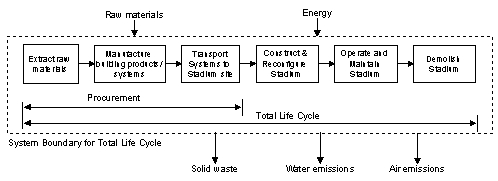
Figure 1 - Depiction of the system boundary from Janssen 1999
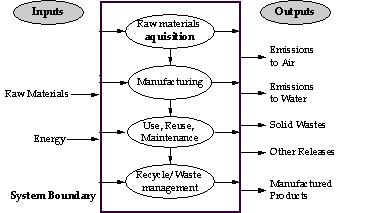
Figure 1.2 Schematic of the LCA process and system boundary (ERM 1998)
This includes the first 3 boxes in Figure 1: extraction of raw materials, manufacture of the products and systems and transport. All major processes, which were required to procure the building systems such as the production of energy and intermediate transport, were also included.In summary, the sub-systems were aggregated as follows:
Concrete systems
insitu concrete
Steelwork systems
pre-cast concrete
bored piles
retaining walls.hand rails, barriers gates and other steelwork
Ceiling and wall systems
facade metal cladding
structural steelworkmasonry block walls
Seating and roof systems
cement render
plasterboard, fibreboard
tiling
glasswork
interior paintworkstadium seating
Building services systems
polycarbonate roof.hydraulics system
Other systems
mechanical and air conditioning system
electrical system
fire service system
stormwater system.lifts and escalators
Excluded
arena track.
Soft furnishings were excluded from the study. Also any systems outside the boundary of the Stadium such as the precinct works and outbuildings were excluded. In all cases, systems excluded were considered minor in relation to the overall works.
Stadium construction and reconfiguration
The fourth box in Figure 1 considered:Waste management:
All activities involved in the construction of the Stadium were contained in the study including crushing the existing concrete cattleyards during site establishment.waste to landfill
Energy use:
waste to reuse or recycling.diesel and gas fuel for construction and demolition machinery
Water use:
electricity.potable town water
Raw materials:
recycled stormwater.additional systems added in reconfiguration.
As the LCA was conducted during construction, site specific data was used from early 1996 on the waste production and energy and water use. Projections then had to be made from mid-1998 to early 1999, when the Stadium was completed.
This life cycle stage also took account of the reconfiguration of the Stadium to the post Olympics 80,000 seat mode. Including the demolition of the upper level temporary North and South stands and the extension of the polycarbonate roof structure.
Operation and maintenance
The operation and maintenance issues considered over the fifty year design life of the Stadium, as shown by the fifth box in Figure 1, are listed below:Energy use for the following systems:
Stadium demolitionheating and hot water
Waste management:
cooling and air conditioning
cogeneration system
lighting
power
kitchen facilities
lifts and escalators.waste to landfill
Water use:
waste to recycling
compostible waste.potable town water
Maintenance of the Stadium:
recycled water
water collected on site.replacement of systems as required
waste produced in maintenance.
The final box in Figure 1 dealt with the end of life scenario for the Stadium after 50 years. The main issues considered were:Energy use for demolition machinery:
diesel fuel
Waste management:
electricity.waste to landfill
waste to reuse or recycling.
From the October 1998 Study 'Stadium Australia Life Cycle Assessment (inventory results)', provided by ERM for use in this case study [15]:"B.1 GENERAL
This appendix documents the major assumptions made in this LCA and forms part of the scope and system boundary of the study. Detailed assumptions on building material manufacturing processes contain confidential information and are not included in this report.B.2 TOTAL LIFE CYCLE· only the major building systems are included (see listing in Appendix C)B.3 PROCUREMENT
· furnishings and fitout are not included
· input data is sourced from suppliers and is product and site specific where possible
· where site specific data is not available, generic LCA data for similar products and processes is used
· the results are aggregated for the whole life cycle of the Stadium.EnergyB.4 CONSTRUCTION AND RECONFIGURATION· annual energy use and production data are used where possible to average out seasonal variationsTransport
· country specific energy production data are used for overseas products
· state specific energy production data are used for Australian products.· all intermediate transport is included for the movement of raw materials, intermediate and final product to the Stadium.B.4.1 WasteB.5 OPERATION AND MAINTENANCE· the waste data was obtained from on-site recycling and monitoring dataB.4.2 Energy
· waste is specified as either a type of solid waste which requires disposal or solid waste for recycling
· waste is not attributed to individual systems, but for the Stadium construction as a whole
· estimates on the waste produced during reconfiguration are made on the same basis as the demolition of the Stadium as discussed in Section B.6.2.· energy use data was obtained from on-site records and estimatesB.4.3 Water
· the energy use is not attributed to individual building systems, but for the Stadium construction as a whole.· water use data was obtained from on-site records and estimatesB.4.4 Air emissions
· the water use is not attributed to individual building systems, but for the Stadium construction as a whole
· recycled stormwater is collected in ponds and primarily used for dust suppression during construction.· the main air emissions considered are volatile organic compounds (VOCs) from the paintwork
· dust from construction was not considered in the study as it was not possible to calculate the actual mass moving off the construction site. With the magnitude and number of developments occurring in the Homebush Bay area, it is difficult to determine the source and extent of dust from individual sites.B.5.1 Stadium use
B.6 DEMOLITION· the energy, water use and solid waste output is based on the estimate of Stadium use in terms of number of events and spectators per year. This data was supplied by MultiplexB.5.2 Energy
· the results of this study are dependent on this estimated usage and will vary significantly if the estimates change
· the Stadium is assumed to have an operational life of 50 years.· annual energy use for the Stadium operation was estimated by Rudds Pty Ltd and supplied by Multiplex for use in this LCA study. The estimate of energy use per year is given in Table B1 below
· transport of spectators to and from the Stadium is not included.B.5.3 Table B1 Estimated annual energy use by function
Function Electricity (GJ/year) Gas (GJ/year) Total (GJ/year) Heating and hot water 1,100 300 1,400 Cooling and air conditioning 18,000 18,000 Cogeneration 39,100 39,100 Power 400 400 Lighting 400 400 Kitchen 900 8,400 9,200 Lifts and escalators 800 800 Total 21,300 47,700 68,900 B.5.4 Air emissions
The air emissions for the Stadium during its operation are primarily determined by its energy use and the source of that energy. The assumed source and energy use for fifty years of operation is as shown in table B1. If the energy use or source of energy changes in that time, the quantity and type of air emissions will be different.B.5.5 Waste
- the estimate of mass of waste generated per spectator per event was taken from the Tower Hill Investment Management Ltd (1998) report into solid waste management during Stadium operation
- this estimate is 0.8 kg per spectator per event and is divided into the proportions given in Table B2
- coupled with the estimated annual usage of the Stadium, the total annual masses of solid wastes and recyclables produced are calculated as shown in Table B2.
Table B2 Annual spectator solid waste
Waste type Mass proportion Total tonnes per year Compostible 40% 800 Paper and board to recycling 31% 300 Glass, aluminium, PET and steel to recycling 16% 600 Landfill 13% 300 B.5.6 Air and water emissions
- compostible waste is assumed to be separated at the source. If facilities are available in Sydney, this waste will be composted and reused. If no facilities are built, this waste will most likely go to landfill.
· no allowance for air or water emissions other than those produced due to energy use are included for the operation of the Stadium.
B.5.7 Maintenance· the maintenance requirements were taken from schedules developed by Domain Consulting for Multiplex
· only maintenance requiring replacement of building materials is included in this study. This includes repainting, refurbishment and replacement of systems as required
· cleaning was not incorporated in the study as it is highly variable, different for each system and difficult to quantify
· air emissions (VOCs) for repainting are included in the study.B.6.1 GeneralFor the purposes of this study, it is assumed the Stadium will be demolished in fifty years time. However, this may not actually happen. The Stadium may have a shorter or longer lifespan, depending on future circumstances.This life cycle stage has the lowest data quality as it relies on forecasts of building material and waste management practices in fifty years. For example, the assumed high percentage of concrete recycling may not be accurate if there is no use for concrete products in fifty years.
However, these estimates are based on indications from current practices and the expectation that reuse and recycling of demolition materials will expand in the future due to depletion of scarce natural resources.B.6.2 Waste· a high degree of deconstruction and recycling is assumed for the Stadium, based on communication with demolition experts. For example, approximately 99% of the concrete and steel is assumed to be reused, recycled or downcycled as they may be valuable commodities in fifty years timeB.6.3 Energy
· materials are considered to the stage where they are taken off site. Waste treatment or the energy involved in transport or recycling, other than concrete crushing on site are not included
· the mass of waste to landfill or recycling is balanced against the mass of materials brought to the Stadium in the building system procurement stage.· all of the concrete is assumed to be crushed on site and the energy requirement for this is included
· the deconstruction/demolition is assumed to be faster than construction and a proportion of the construction energy is allowed for demolition.
B.6.4 Air and water emissions
· no allowance for air or water emissions other than those produced due to energy use is made for the demolition." (Appendix B)Data (back to top of page)
How data was collected
The data was collected using a quantitative questionnaire, with assistance provided to help in its completion. Building product suppliers were contacted for a description of their manufacturing process and associated raw materials, energy use, water use and waste products. Data was also collected from other studies especially for the operational phase. Examples of such studies are: forecast energy use for the Stadium (Rudds 1998) and forecast water use (Sinclair Knight Merz 1998).(Janssen and Buckland, 2000)Other data was collected from invoices for electricity, water, diesel, petrol and gas and monthly reports. Information was supplied by building product suppliers, consultants and subcontractors, and collected by Multiplex, ERM Mitchell McCotter and the Department of Public Works and Services.[9]
From the October 1998 Study 'Stadium Australia Life Cycle Assessment (inventory results)', provided by ERM for use in this case study[15]:
"Conducting a quantitative life cycle assessment of this scale requires collection of a considerable amount of data from a wide range of sources. Data was collected by Multiplex, the Department of Public Works and Services and ERM Mitchell McCotter with cooperation from the Stadium consultants, subcontractors and building product suppliers.Data sources and assumptionsThe data is relevant to the actual building material or life cycle stage. For example, if a building material is manufactured in Australia, the data reflects the Australian conditions.
All operations were based on mass or energy flows and entered onto the Boustead Model 3 database for life cycle inventory calculations. This model calculates the results, given the material and energy inputs and environmental outputs on a life cycle basis."
The data collected by the questionnaire was verified and supplemented using:
- computer databases of previous studies
- published literature and trade information
- previous energy or environmental audits
- direct contact with the manufacturer or designer (Janssen, 1998)
Allocation
No information was available on allocation procedures for co-products.
Impact methodology
The impact methodology used was that based on the DPWS, Boustead model.
Calculation
It was reported that all calculations were based on mass or energy flows through the system(Janssen, 1999).Results (back to top of page)
Most of the results were divided into four stages:Summarises the results of the life cycle assessment for energy use, greenhouse gas emissions, solid waste production and water use (as taken from the DPWS 1998 report in Janssen, 1999).
- Procurement
- Construction
- Operation
- Demolition
Procurement Construction & Reconfiguration Operation & Maintenance Demolition Total Primary energy use (TJ) 1,370 150 6,000 80 7,600 18% 2% 79% 1% Greenhouse gas emissions (‘000 tonnes CO2 equiv.) 140 10 470 5 625 22% 2% 75% 1% Solid wastes – recycled or landfilled (‘000 tonnes) 80 50 160 385 675 12% 7% 24% 57% Water use (‘000 tonnes) 680 90 2250 5 3025 22% 3% 74% >1% Table1 : Summary of Stadium Australia LCA results (Janssen 1999) Total Life Cycle (results from the October 1998 Study 'Stadium Australia Life Cycle Assessment (inventory results)', provided by ERM for use in this case study [15]:EnergyAs Table E1 shows, the primary energy use over the total life cycle for the Stadium is estimated at approximately 7600 TJ. Figure E3 shows the percentage division of this energy use by life cycle stage.Raw materialsThe operation and maintenance of the Stadium over 50 years accounts for 79% of the energy use and is the most significant stage in the Stadiums life for energy considerations. Therefore the design decisions which affect the operating energy of a building such as Stadium Australia will have a relatively significant impact on the building’s total energy use.
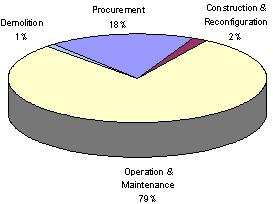
Figure E3 Total primary energy use by life cycle stage
The procurement of the building systems (ie extraction of raw materials, manufacture and transport to site) accounts for 18% of the total primary energy and indicates that the choice of building materials is also significant for total life cycle energy.
Figure E4 shows the percentage breakdown of raw materials used over the Stadium’s life time. Water is the most significant raw material by mass and approximately 75% of it is used during the operation of the Stadium. However, note that due to the design choices made for the Stadium, such as use of recycled water and rainwater harvesting on the Stadium roof, 60% of the water used over the life of the Stadium is non-potable.
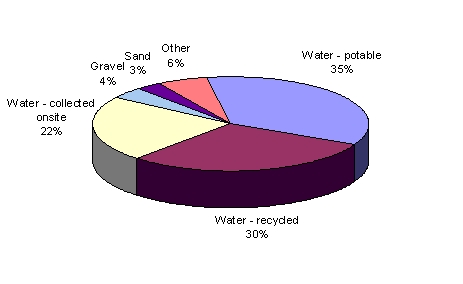
Figure E4 Total raw material use
Solid wasteAs Table E1 shows, approximately 671 000 tonnes of solid wastes are produced over the life of the Stadium. In this study, solid outputs from the system are termed solid wastes which are reused, recycled or are disposed to landfill. Figure E5 shows the likely disposal route for solid wastes over the life of the Stadium.Sixty eight percent (68%) by mass of the wastes have been estimated as being recycled or reused. Twelve percent (12%) will be landfilled and 20% have an unknown disposal route, reflecting the uncertainty in compostible waste management during operation of the Stadium. The facilities for segregating compostible waste are incorporated in the Stadium design. However, facilities to compost the waste are not yet available in Sydney.
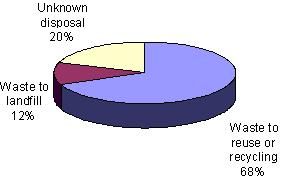
Figure E5 Disposal route for solid waste generated over the total life of the Stadium
Air emissionsThe most significant air emission by mass over the life of the Stadium is carbon dioxide, a greenhouse gas. Operation and maintenance of the Stadium is responsible for the greatest proportion of greenhouse gas emissions, as illustrated by Figure E6. These greenhouse gas emissions are due to energy use over the Stadium’s fifty year design life, which involves the burning of fossil fuels such as coal and gas.E5.3 Procurement
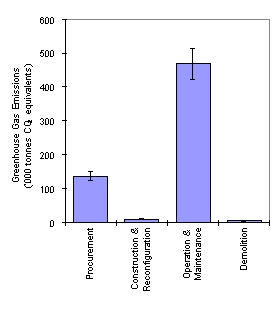
Figure E6 Greenhouse gas emissions by life cycle stageThe procurement stage of the Stadium’s life cycle involves the extraction of raw materials, manufacture of building materials and their transport to the site. As discussed in Section E5.2, the procurement of the building systems is responsible for 18% of the total energy use. Figure E7 shows the contribution of the major building materials to this energy use. The concrete and steelwork systems dominate the results, as may be expected for the Stadium construction type.
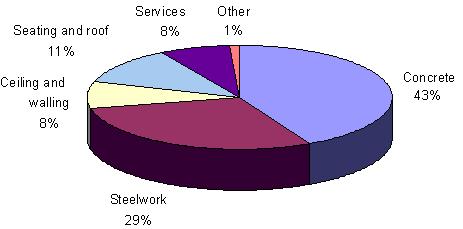
Figure E7 Energy use in procurement by major building systems
E5.4 Construction and ReconfigurationThe most significant result for the construction and reconfiguration of the Stadium is the generation and disposal of solid wastes. Hardcore wastes account for most of the waste generated during construction and reconfiguration. It is estimated that approximately 76% of the construction and reconfiguration waste will be reused or recycled. For construction only, between 60% and 70% of the waste is being sent to recycling.E5.5 Operation and MaintenanceEnvironmental measuresSome of the results for the operation and maintenance have been discussed in Section E5.2 above. An integral part of the Stadium design has been the incorporation of environmental measures for energy and water efficiency such asStadium vs conventional design
· energy cogeneration with waste heat recovery
· power factor correction
· passive ventilation on levels 1, 2 and 6
· high energy efficiency lighting
· natural lighting
· carpark ventilation monitoring
· harvesting of rainwater on the Stadium roof for irrigation
· use of recycled water
· reduced flush toilets
· water efficient fixtures.As a comparison, the annual primary energy consumption, greenhouse gas emissions and water consumption were estimated for both the Stadium design and a more conventional design which does not incorporate any of the measures listed above. Figure E8 illustrates how the annual primary energy consumption for the Stadium design is 120 TJ compared to 175 TJ for the conventional design, representing an approximately 30% annual primary energy saving.
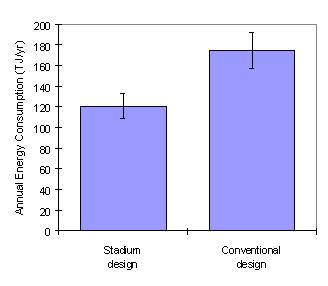
Figure E8 Annual primary energy consumption for Stadium vs conventional design
The energy efficiency measures and the use of gas cogeneration in the Stadium translates into a 37% reduction of greenhouse gas emissions when compared with a more conventional design, as shown in Figure E9.
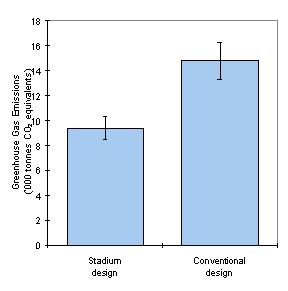
Figure E9 Annual greenhouse gas emissions for Stadium vs conventional designAs Figure E10 shows, the annual water use for the Stadium design is approximately 45,000 tonnes compared to 52,000 tonnes for a more conventional design, representing a 14% reduction in water use.E5.6 DemolitionFigure E10 also shows that the source of this water for the Stadium design is significantly different from that of a conventional design as 77% of the water is either sourced from recycled water or collected on site. Twenty three percent (23%) of the water is sourced from the potable water supply for the Stadium design. A conventional design could be expected to source 100% of its water from the potable supply.
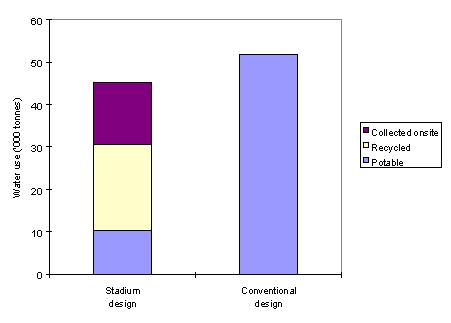
Figure E10 Annual water consumption for Stadium vs conventional designThe most significant consideration for demolition of the Stadium is the production and management of waste. Demolition accounts for 58% of the solid waste created over the total life of the Stadium.Consideration of the demolition of the building is therefore most important for solid waste management over its total life cycle.
However, forecasting the waste management practices in 50 years at the end of the Stadium's design life is difficult. Construction, demolition and waste management experts were contacted to make estimates on the proportion of the waste reused, recycled or disposed to landfill.
It is expected that up to 98% of the waste generated during demolition of the Stadium will be reused or recycled.
Discussion (back to top of page)
Why LCALCA was used in this project primarily to help Multiplex Construction to quantify the environmental performance of the stadium, to set a benchmark for future stadia and to ensure that the regulatory and planning requirements were met.
DataLCA was also seen to have potential in choosing building materials and assisting in the design issues such as waste and energy efficient design (Janssen and Buckland, 2000).
Comment: "The obvious area for life cycle assessment is in the concept and detailed design stages. This is where most decisions are made that affect the environmental performance of the project or building." Matthew Janssen personal communication 21/2/2001The information and data for the LCA was collected by quantitative questionnaires that were given to all subcontractors and information requested from manufacturers. Highly accurate data was obtained through continued communication with the subcontractors and initiatives such as workshops to help them deal with the requirements. Importantly, periodic sensitivity analysis helped determine priorities in data collection. This data was kept in commercial confidence by Multiplex and only aggregated results used publicly.[10]
Tool usedProblems with data collection
Difficulty in collecting the data
The article from Building Innovation and Construction Technology May 1999 ‘Theory into fact’ discusses the difficulty in collecting data. To expedite the collection they report that the requirement for data collection was integrated it into the contractual arrangements. According to Buckland, "it is the first time subcontractors have participated in an inventory, and collection of information was not easy.”[11]Using international data
Discussed in the 1998 AIRAH conference paper by Matthew Janssen is the problem of different fuel mixes for energy and the need to be cautious when using international data (Janssen, 1998). There is a need to use Australian data and if it is not available to tailor data to Australian conditions.All data collected was entered into a computer tool at the DPWS based on the Boustead Model 3 database. This tool calculated the impacts.[12]
Advantages of using LCAThe results published in the public domain look mainly at energy, water, waste and greenhouse. Impacts commonly reported on but not included were:
- ozone depletion,
- toxicity (human and ecological)– though indoor air quality issues were looked at
- acidification
- smog
This was due to the confidentiality of the data, the lack of a suitable Australian impact methodology to calculate these accurately and the lack of data on these impacts.
Multiplex can use the lessons learnt from the Life Cycle Assessment in other large scale public buildings. (Janssen and Buckland, 2000). Further the results can be used by the industry, in future design and construction projects, particularly of other stadia (Janssen, 1999).
BHP LCA of the Green GamesMultiplex and its many product manufacturers, suppliers and subcontractors have gained a better understanding of their interaction with the environment in terms of raw materials, energy use and emissions to air, water and land. (Janssen and Buckland, 2000)
BHP was asked as major sponsor to carry out an LCA to provide the ‘greenprint’ which the Sydney games lacked, as a starting point for future hosts (EA, 2000). This LCA was summarised into the simple modeling tool LISA. As a point of interest for this case study a short summary is made of the model. This can be viewed interactively by downloading the LCA tool LISA.
“BHP intends to continue to develop and apply LCA in the future because of its value as a powerful tool for reducing the impact of products and processes on the environment.” (pg. 30, EA 2000)
Conclusion (back to top of page)
How LCA influenced the results of the case studyMultiplex and Stadium Australia used Life Cycle Assessment in the original design optimisation of the Stadium. Three main designs were assessed.
Using a mixture of Life Cycle Assessment and cost/benefit analysis, the better environmental practice design was chosen. [14]
- a conventional stadium design,
- a better environmental practice design and
- a best practice design.
Acknowledgments and Project team (back to top of page)
References(back to top of page)Thanks go to Bill Buckland and David Ghannoum of Multiplex, Allison Smith of ERM Mitchell McCotter, Zig Peshos from the NSW Department of Public Works and Services and Matthew Janssen, currently with Dames and Moore but previously Senior Environmental Engineer with URS Australia.
Project Team
Multiplex Constructions
Bill Buckland Design Manager Report review
Ulrika Fernstrom Site Engineer Data collection and review
Environmental & Energy Services, DPWSGary Woods Manager Report review
Dawn Perryman Principal Scientist LCA and report review
Matthew Janssen Environmental Engineer LCA modelling and report preparation
ERM Mitchell McCotterJasmine Westerman Senior Associate Report review
Kate Jackson Project Engineer Data collection
DPWS (1998) NSW Department of Public Works and Services: Stadium Australia Life Cycle Assessment (Inventory Results). Conducted for Multiplex Constructions (NSW) by DPWS Environmental and Energy Services and ERM Mitchell McCotter (1998).EA (2000) Greening the Games – Australia Creating Sustainable Solutions for a New Millennium. Published by Environment Australia, June 2000. Available from http://www.environment.gov.au/greengames/acrobat/games.pdf(last accessed 8/2/2001).
Janssen, M. (1998) Life Cycle Assessment of Buildings and Services. AIRAH International Conference, Sydney 1998
Janssen, M.(1999) Stadium Australia Life Cycle Assessment. Paper presented at the Construction conference, 11 May 1999
Janssen, M. and Buckland, B. (2000) Stadium Australia Life Cycle Assessment – Energy Use and energy Efficient Design.
[1] Description from Building Innovation and Construction Technology 'Theory In To Facts' section, Number 5 February 1999 as viewed from the website http://www.dbce.csiro.au/inno-web/0299/greenolympics.htm last accessed 6/2/2001
[2] NSW State Government: Environmental Planning and Assessment Act 1979, State Environmental Planning Policy No 38 - Olympic Games Projects, (1993).
[3] Sydney Olympics 2000 Bid Limited: Environmental Guidelines for the Summer Olympic Games, (1993)
[4] NSW Department of Public Works and Services: Stadium Australia Life Cycle Assessment (Inventory Results). Conducted for Multiplex Constructions (NSW) by DPWS and ERM Mitchell McCotter. Report prepared by DPWS Environmental and Energy Services (1998)
[5] Building Innovation and Construction Technology 'Theory In To Facts' section, Number 5 February 1999 as viewed from the website http://www.dbce.csiro.au/inno-web/0299/greenolympics.htm last accessed 6/2/2001
[6] Personal communication with Matthew Janssen 21/2/2001
[7] Personal communication with Matthew Janssen 21/2/2001
[8] Personal communication with Matthew Janssen 21/2/2001
[9] Information sourced from Building Innovation and Construction Technology 'Theory In To Facts' section, Number 5 February 1999, http://www.dbce.csiro.au/inno-web/0299/greenolympics.htm last accessed 6/2/2001.
[10] Information sourced from Building Innovation and Construction Technology 'Theory In To Facts' section, Number 5 February 1999, http://www.dbce.csiro.au/inno-web/0299/greenolympics.htm last accessed 6/2/2001.
[11] Information sourced from Building Innovation and Construction Technology 'Theory In To Facts' section, Number 5 February 1999, http://www.dbce.csiro.au/inno-web/0299/greenolympics.htm last accessed 6/2/2001.
[12] Information sourced from Building Innovation and Construction Technology 'Theory In To Facts' section, Number 5 February 1999, http://www.dbce.csiro.au/inno-web/0299/greenolympics.htm last accessed 6/2/2001.
[13] Comment made in Building Innovation and Construction Technology 'Theory In To Facts' section, Number 5 February 1999,
http://www.dbce.csiro.au/inno-web/0299/greenolympics.htm last accessed 6/2/2001.[14] Personal communication Matthew Janssen 21/2/2001
[15] October 1998, Stadium Australia Life Cycle Assessment (Inventory Results) This study was commissioned by Multiplex Constructions and carried out with their assistance by the NSW Department of Public Works and Services and ERM Mitchell McCotter.

Picture used with permissions from Multiplex
For more information contact Tim Grant at the Centre for Design at RMIT.